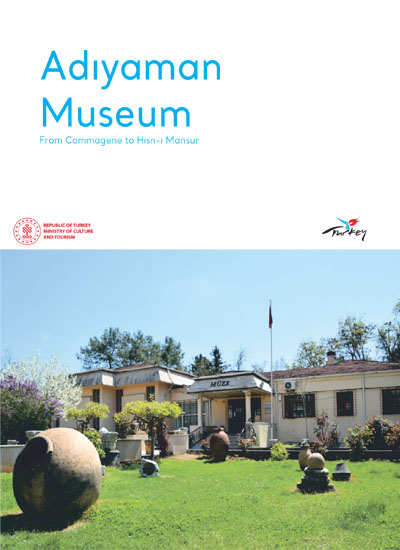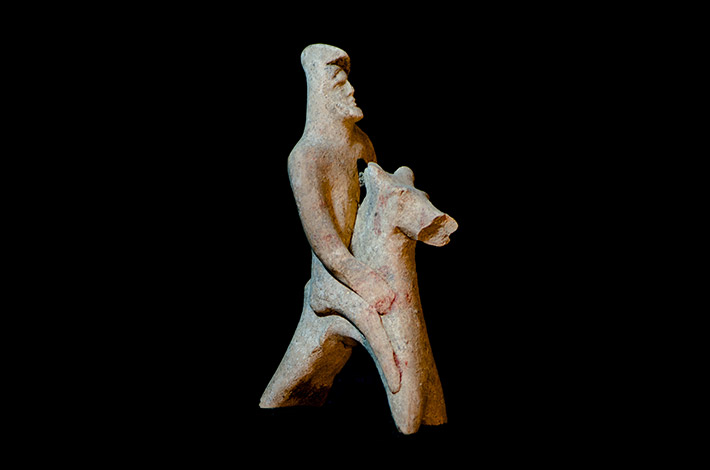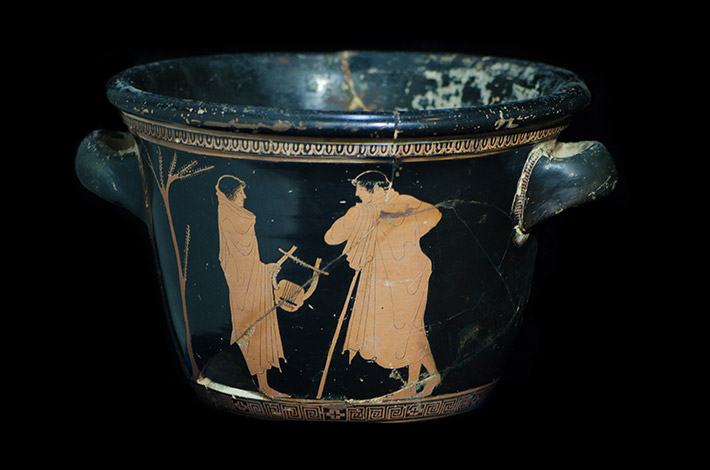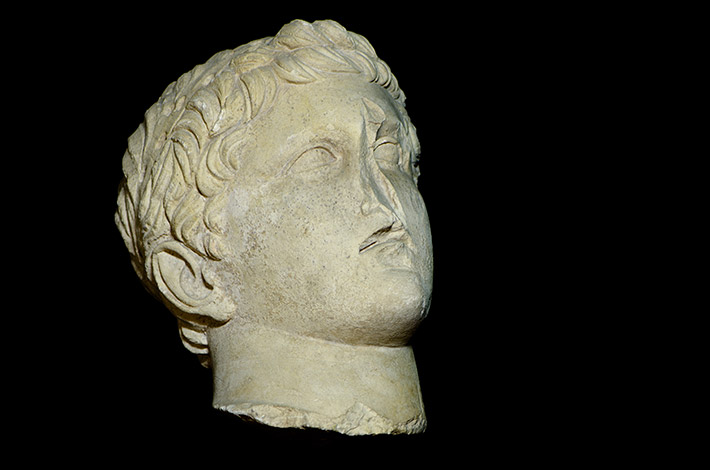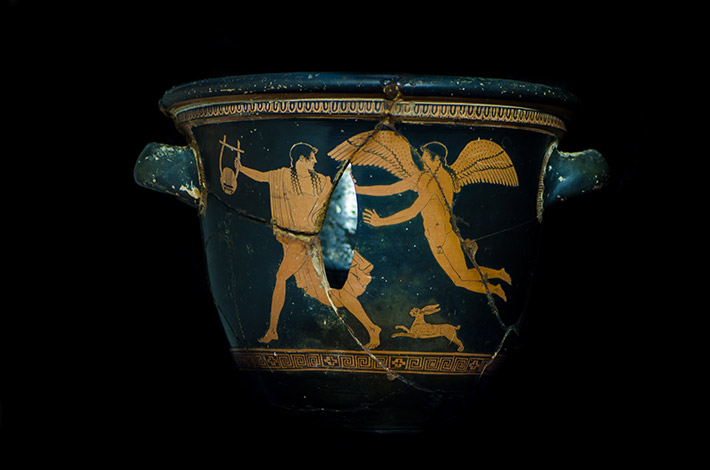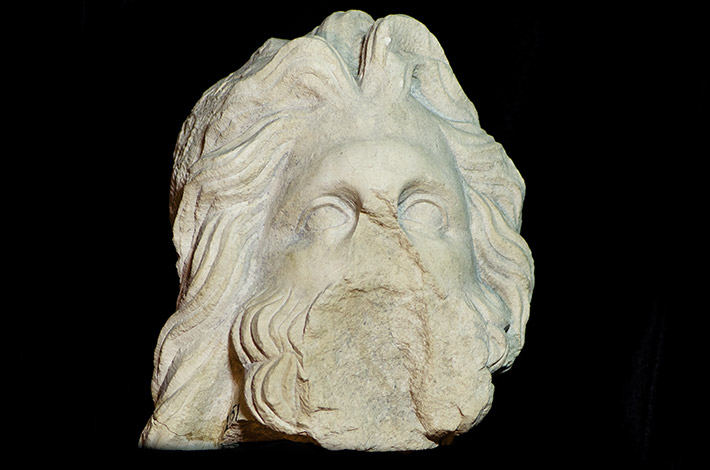At the bottom right corner of the stele, there is a Greek inscription with eight lines. It describes Julius Paulus, a commander who erected this relief in remembrance of a victory he won by donating his clothes to the god he believed helped him. The inscription then states that he dedicated this relief to Jupiter (Zeus), the God of Doliche. During the excavation carried out in 1983 in Samsat District, a statue of Antiochos was discovered. The young king's head is turned slightly to the right, with his hair depicted as raised segments of flame. A diadem is tied at the back of his head. On his left cheekbone, there is an inscription with partially protected vestiges of red paint. The name 'Antiochos' can be read under his left eye. A limestone sculpture, discovered in 1970 in Kilisik Hamlet of Çıraklık Village in Kahta District, has attracted considerable attention due to its similarity to the statues found in Göbeklitepe in Şanlıurfa. Archaeologists tentatively date this cult sculpture back to 7500 - 7000 BC. The front part of the body where the arms join together features a small relief in the form of a human. The statue depicts a woman or a goddess giving birth. The stele discovered during necropolis excavations of the ancient city of Perra depicts Jupiter Dolichenus in military attire. He is wearing a cloak, chest armor, skirt, boots, and a sword in his belt sheath. Jupiter Dolichenus, with his curly beard, is shown standing while holding an eagle in one hand and lightning in the other. The statue of an eagle, with its wings spread sidewise, is also visible, although the upper part is broken.
ADIYAMAN MUSEUM
